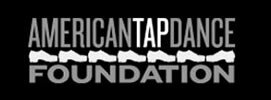About the Copasetics
About the Copasetics
On December 5, 1949, seven days after Bill “Bojangles” Robinson was buried, the Copasetics, “a social, friendly benevolent club” of musical and tap artists dedicated to preserving the memory of Bill Robinson, was organized. Its members pledged, as stated in the preamble of the organization, “to do all in their power to promote the fellowship and to strengthen the character within their ranks.” The club’s motto was “Everything’s Copasetic”—-Bojangles’ expression for fine, okay, grand.
The club's original twenty-one members were: Charles “Cholly” Atkins, Clayton “Peg Leg” Bates, Paul Black, Roy Branker, Ernest “Brownie” Brown, Charles “Honi” Coles, Chink Collins, Charles “Cookie” Cook, Emory Evans, Francis Goldberg, Frank Goldberg, Milton Larkin, LeRoy Myers, Pete Nugent, Luther Preston, Phace Roberts, John E. Thomas, James Walker, Elmer Waters, Eddie West, and composer Billy Strayhorn.
Subsequent membership included: Billy Eckstine, Lewis Brown, Curley Hamner, Timmie Rogers, Charlie Shavers, Leslie “Bubba” Gaines, Dizzy Gillespie, James “Buster” Brown, Louis Simms Carpenter, Albert “Gip” Gibson, James “Stump” Cross, Jimmy Wright. There were also honorary members such as: Willie Bryant, Lionel Hampton, Sammy Davis Jr., the Nicholas Brothers, Chuck Green, Joe Williams, and Dick Gregory.
During the lean tap years of the 1950s and 60s, the Copasetics remained a vital social force in the Harlem community, with boat cruises, annual balls, and charitable performances. In the 1970s and 80s the Copasetics were a major influence in the revival, and then renaissance of tap. The renewed interest in tap brought many older tap dancers out of retirement to delight audiences on the concert stage and in Broadway hits such as “Bubbling Brown Sugar,” “My One and Only,” and “Black and Blue Revue.” Members of the Copasetics taught, mentored, and performed with the next generation of tap pioneers, including Brenda Bufalino, Jane Goldberg, Deborah Mitchell, and many, many others.
The ATDF launched the Tap Teacher Training Program based in the Copasetic Canon to ensure that this legacy of tap excellence continues onto the 21st century. The ATDF is proud to honor the Copasetics and their contributions, as we nurture new voices and new grooves that grow from these influences and beyond.
By Margaret Morrison and Tony Waag
Resources:
atdf.org
Brenda Bufalino-Tapping the Source: Tap Dance Stories, Theory and Practice. Codhill Press, 2004.
copasetics.com/copasetics/copasetics.htm
Constance Valis Hill-Tap Dancing America: A Cultural History. Oxford University Press, 2010.


